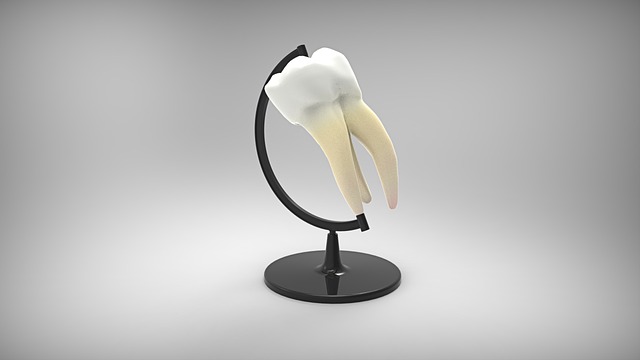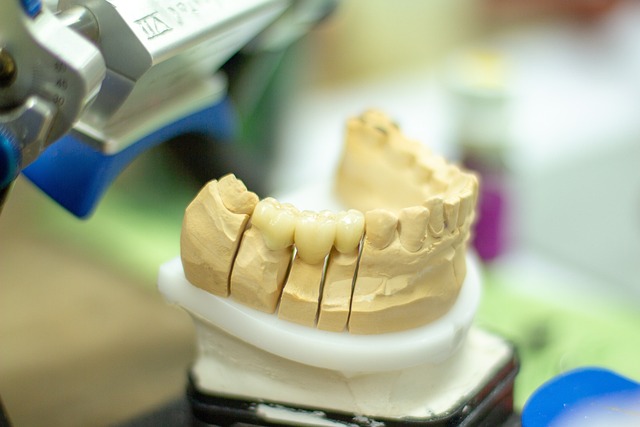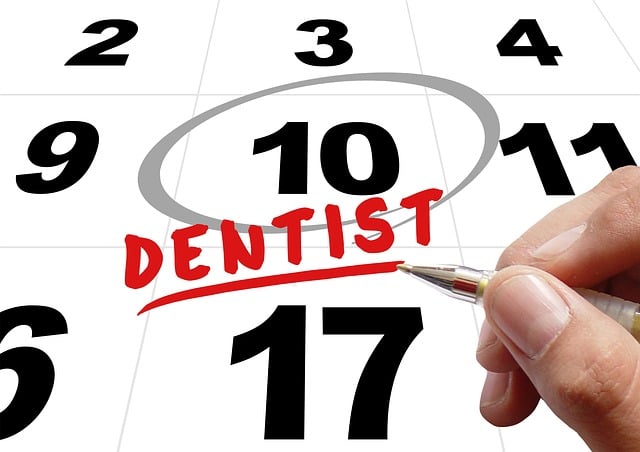Gum infections, caused primarily by bacterial plaque buildup, require diligent dental hygiene for prevention. Symptoms include gum inflammation, bleeding, and loose teeth. Antibiotics, such as amoxicillin and metronidazole, are crucial in managing severe periodontitis, especially when combined with teeth straightening using clear aligners in Oxford. Proper antibiotic selection depends on infection severity and patient health history, with a standard course lasting 7-10 days. This innovative treatment method offers improved access for oral care during alignment, ensuring comprehensive gum health alongside aesthetic dental improvements.
Gum infections, or periodontitis, can cause significant discomfort and impact overall health. This article explores the role of antibiotics in managing gum disease effectively. We delve into the causes and symptoms, understanding that timely intervention is key. Antibiotics prove crucial in combating bacterial infections, and we guide practitioners through prescription decisions, offering insights on choosing the right antibiotic and administration techniques. Moreover, we introduce an innovative approach: combining teeth straightening with clear aligners alongside antibiotic treatment, as seen in popular options like clear aligner therapy in Oxford.
- Understanding Gum Infections: Causes and Symptoms
- The Role of Antibiotics in Treating Gum Disease
- When to Prescribe Antibiotics for Gum Infections
- Choosing the Right Antibiotic: Options and Considerations
- Administering Antibiotics: Dosage, Timing, and Monitoring
- Combined Approach: Teeth Straightening with Clear Aligners alongside Antibiotic Treatment
Understanding Gum Infections: Causes and Symptoms

Gum infections, also known as periodontal diseases, are common oral health issues that can range from mild inflammation to severe conditions affecting the tissues supporting your teeth. Understanding the causes and symptoms is crucial when considering treatment options, such as prescribing antibiotics. One of the primary causes of gum infections is bacterial plaque buildup along the gumline. Regular dental practices like proper brushing and flossing help remove this film of bacteria but if left unchecked, it can harden into tartar, promoting further inflammation and infection.
Symptoms may include red, swollen, or tender gums, bleeding while brushing or flossing, persistent bad breath, receding gums, loose or shifting teeth, and in severe cases, pus between the tooth and gum. Interestingly, even those with perfectly aligned teeth through methods like teeth straightening with clear aligners Oxford can still be susceptible to gum infections if proper oral hygiene practices are not followed. Therefore, a holistic approach to dental care is key in maintaining overall oral health.
The Role of Antibiotics in Treating Gum Disease

Antibiotics play a crucial role in managing gum infections, which are a common consequence of periodontitis—a severe form of gum disease. When plaque buildup and inflammation lead to infected gums, antibiotics can help combat the bacterial infection at its root. These medications are often prescribed as part of a comprehensive treatment plan for periodontal issues, especially when non-surgical methods like teeth straightening with clear aligners Oxford don’t fully resolve the problem.
By targeting specific bacteria causing gum inflammation and abscesses, antibiotics work to reduce oral infections and promote healing. Common types used include amoxicillin, metronidazole, and doxycycline. Proper antibiotic use, combined with improved oral hygiene practices, can significantly improve symptoms, prevent further damage to gum tissue, and even support the overall health of the mouth.
When to Prescribe Antibiotics for Gum Infections

When considering prescribing antibiotics for gum infections, it’s crucial to evaluate the severity and extent of the inflammation. Typically, antibiotics are recommended when non-surgical treatments, such as improved oral hygiene and deep cleaning, fail to resolve the issue within a reasonable timeframe. Signs that may indicate the need for antimicrobial therapy include persistent redness, swelling, and bleeding of the gums, especially if these symptoms show no improvement after initial treatment.
In certain cases, prescription antibiotics may be necessary for more advanced periodontitis or gum disease. For instance, individuals with teeth straightening using clear aligners in Oxford might experience gum infections that require topical or systemic antibiotics to prevent further complications and ensure oral health during their treatment journey.
Choosing the Right Antibiotic: Options and Considerations

When prescribing antibiotics for gum infections, it’s crucial to choose the right antibiotic that effectively targets the specific cause of the infection. Options include penicillin, amoxicillin, and macrolides like azithromycin. The selection should consider factors such as the severity of the infection, patient allergies or sensitivities, and the presence of any other co-morbidities. For instance, patients with a history of teeth straightening using clear aligners in Oxford might require antibiotics that won’t interfere with their oral health or the healing process of their gums.
Certain antibiotics are more suitable for specific types of gum infections. For example, penicillin is often recommended for moderate to severe cases due to its broad-spectrum activity and low risk of side effects. Amoxicillin is a common alternative, particularly effective against streptococcal bacteria commonly associated with periodontal disease. Macrolides like azithromycin can be considered for mild to moderate infections, offering both antibacterial and anti-inflammatory properties.
Administering Antibiotics: Dosage, Timing, and Monitoring

When prescribing antibiotics for gum infections, it’s crucial to consider the severity of the condition and patient-specific factors. The choice of antibiotic, dosage, and duration should be tailored accordingly. Typically, a course of oral antibiotics is recommended, with common choices including amoxicillin or metronidazole.
For optimal results, adhere to prescribed dosages and timing. Antibiotics are usually taken twice daily for a period ranging from 7 to 10 days. Regular monitoring is essential to assess the effectiveness of treatment and detect any potential side effects, especially when considering teeth straightening with clear aligners Oxford. It’s important to follow up with patients to ensure compliance and make adjustments as necessary.
Combined Approach: Teeth Straightening with Clear Aligners alongside Antibiotic Treatment

In addition to traditional antibiotic treatments, a combined approach involving teeth straightening with clear aligners can significantly enhance the management of gum infections in Oxford. Clear aligner therapy offers a discreet and comfortable alternative to braces, allowing patients to maintain good oral hygiene during treatment. This is particularly beneficial for individuals with dental gum issues as it ensures minimal disruption to daily routines.
The synergy between clear aligner therapy and antibiotics provides a holistic solution. As the clear aligners gradually straighten the teeth, they also facilitate better access for topical antibacterial treatments and oral care products, which can further combat infection. This dual approach, tailored to the specific needs of each patient, has shown promising results in addressing gum infections effectively while achieving aesthetic dental improvements.
In conclusion, antibiotics play a pivotal role in managing gum infections, offering an effective solution for inflammation and bacterial control. When combined with teeth straightening using clear aligners in Oxford, this comprehensive approach addresses both oral health issues simultaneously. By understanding the appropriate prescription, administration, and timing of antibiotics, healthcare professionals can significantly enhance patient outcomes and contribute to improved overall dental care.
